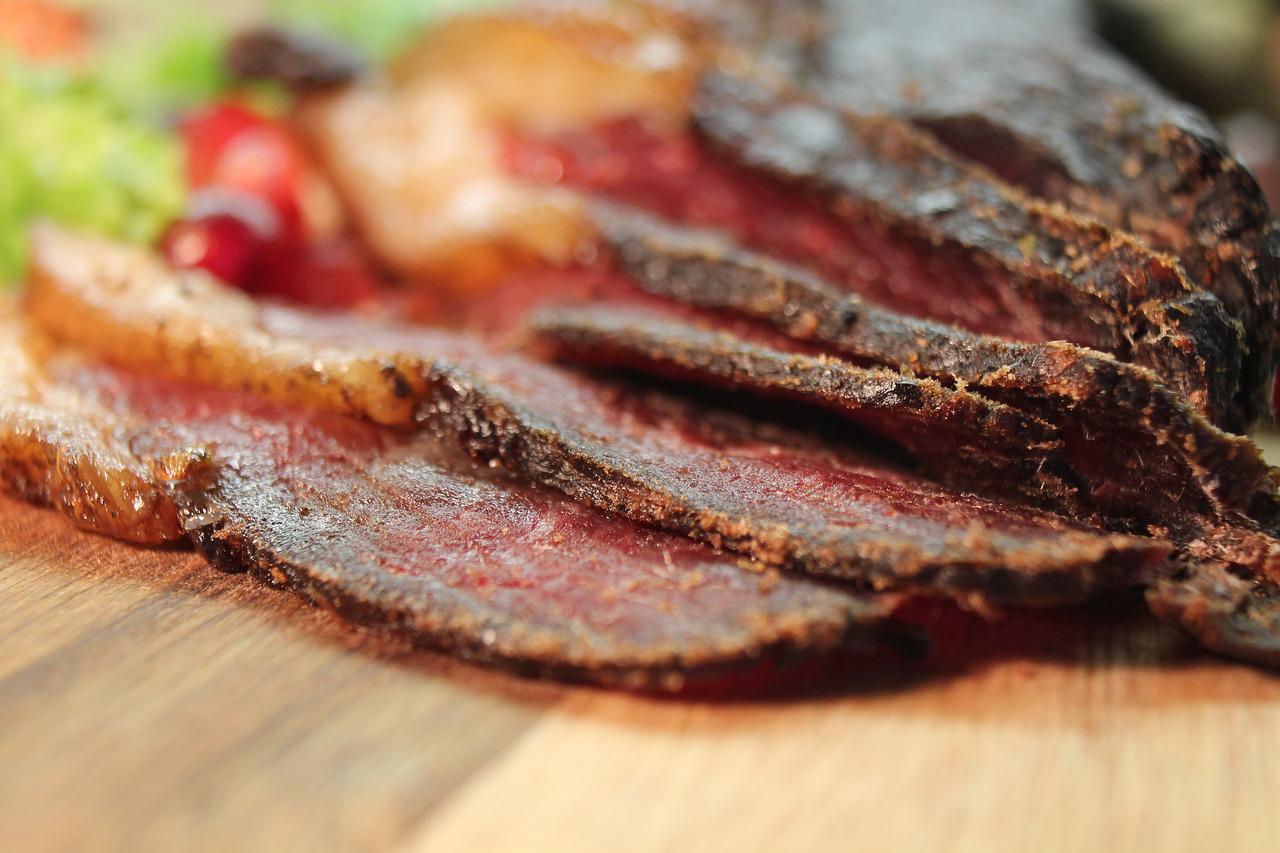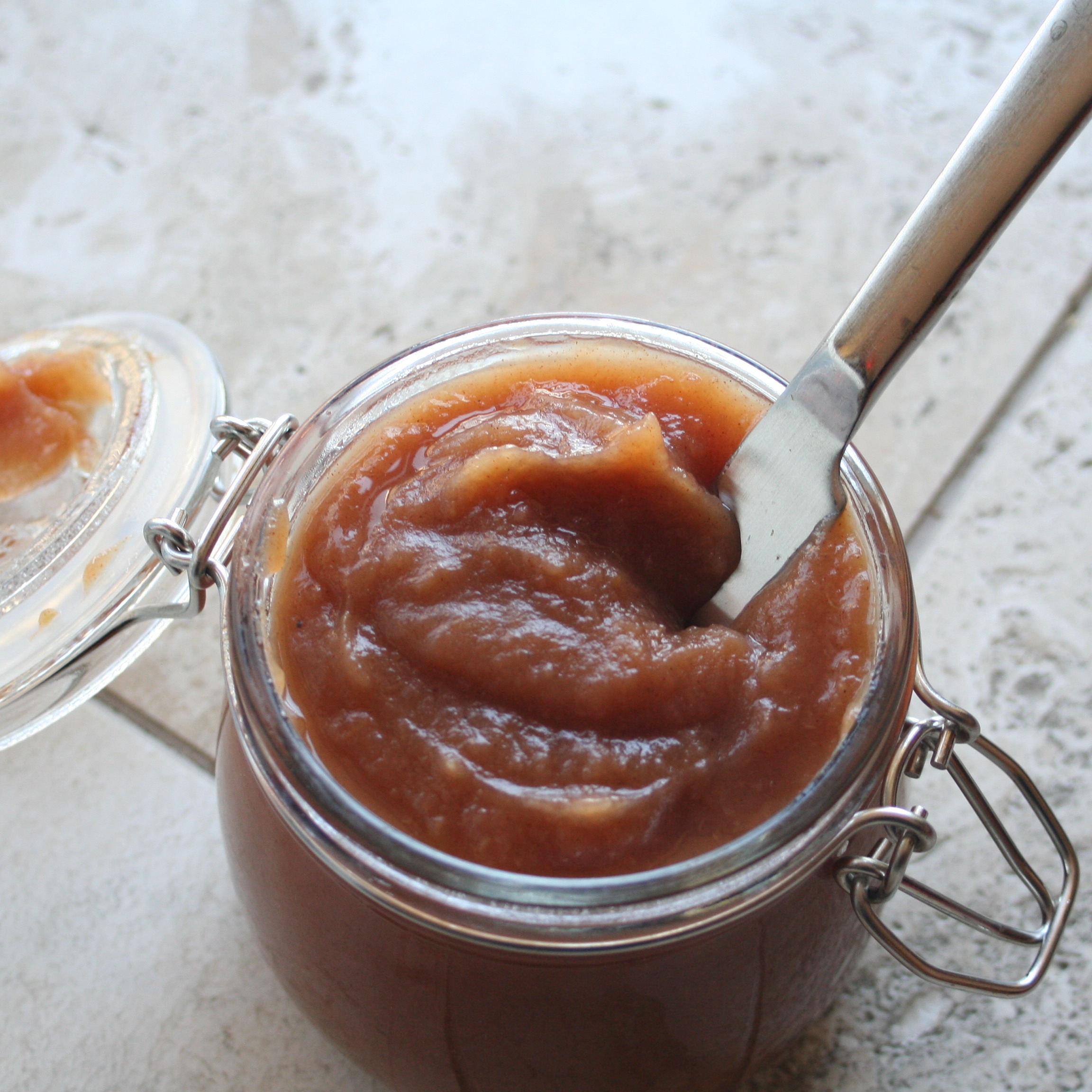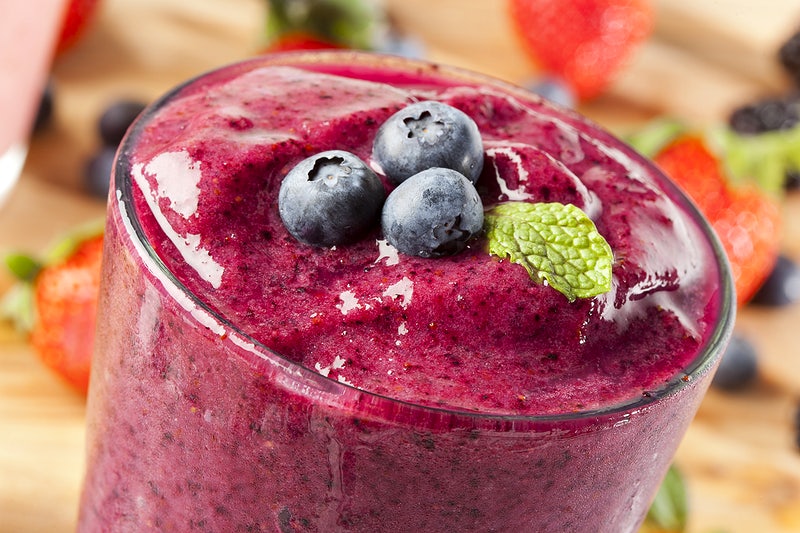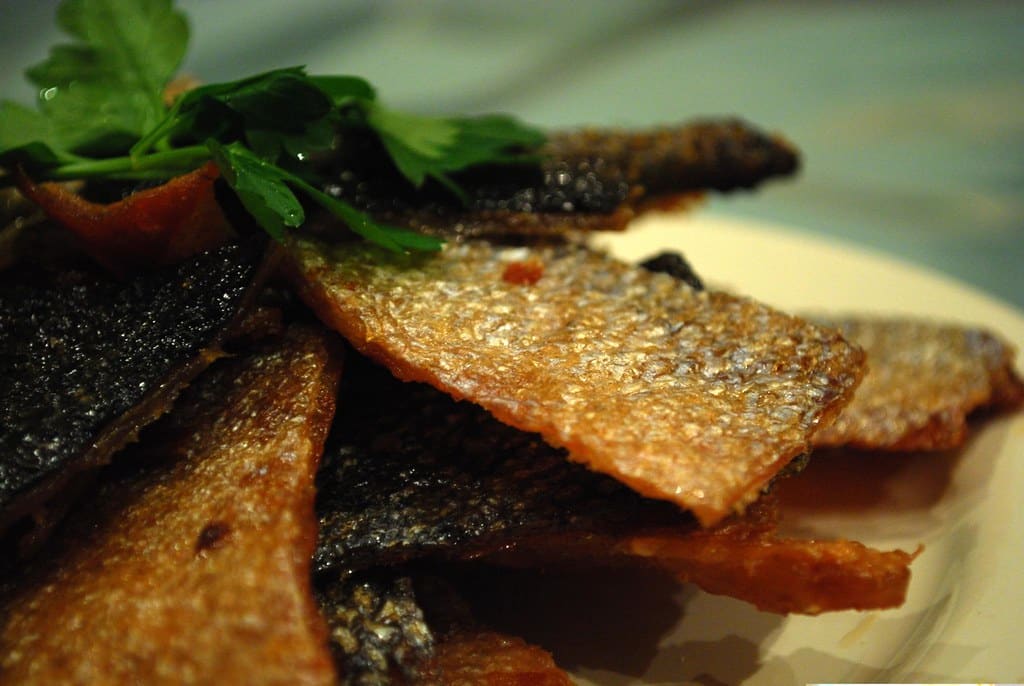- Air Fryer Frozen Fish Fillets No Breading - July 22, 2024
- Slow Cooker Potatoes Recipe - July 22, 2024
- El Torito Corn Cake Recipe - July 22, 2024
Pondering a kitchen gadget that chops, blends, and purees? It’s quite likely the **food processor** or **blender** has crossed your mind.
Working out which one of these appliances is best for your needs can be confusing.
This article will help you to make a decision.
I will take you through the differences between food processors and blenders, tell you what tasks they are each better suited to, and explain where their uses cross over with each other.
Ultimately, the best choice of the appliance to buy will depend on the jobs that you want to use it for.
Key point: These two appliances are often used interchangeably. Food processors tend to be more versatile and can do more jobs, while blenders tend to outperform food processors when it comes to actually blending food into a smooth mix.
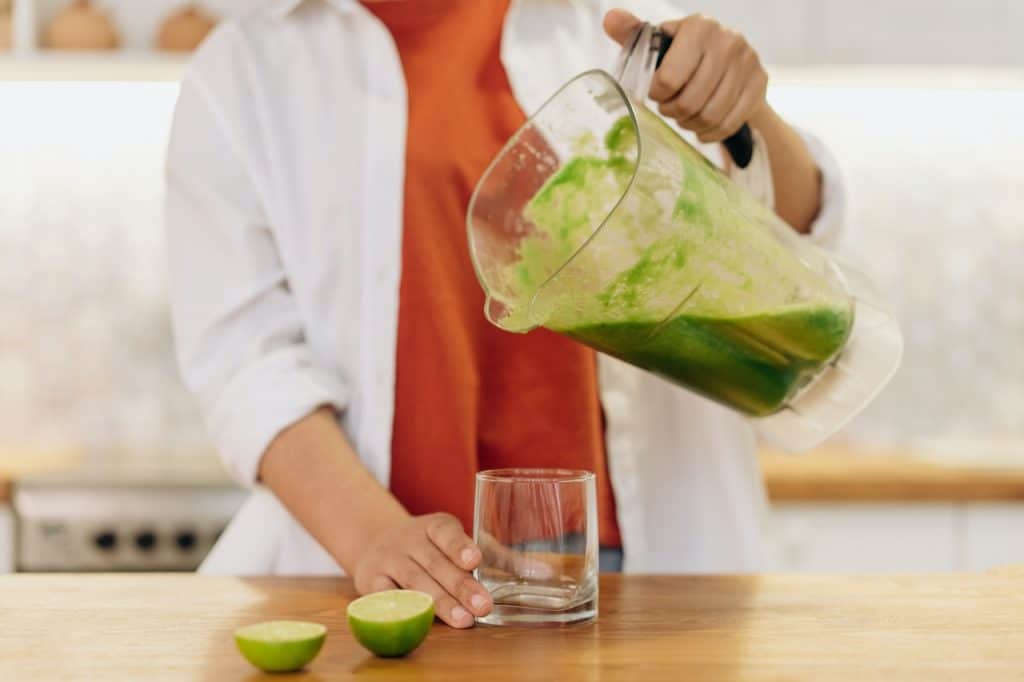
Differences Between Blenders and Food Processors
As I’ve said, there is a lot of crossover between food processors and blenders in that in some instances they can both do the same job.
However, they work differently and as a result, they are each more suited to some tasks than the other.
Blender
A blender usually consists of a tall, funnel-shaped jar with small spinning blades at the bottom, which sucks ingredients towards them as they spin.
The shape of the jar and the sucking action creates a vortex that funnels ingredients into the blades.
As it mixes the ingredients are quickly and repeatedly sent through the blades, broken down, and mixed together into a fine mix.
Blenders excel at making liquid mixes for things like smoothies, soup, and drinks.
What are immersion blenders?
Immersion blenders are handheld blenders.
Rather than being a unit consisting of a bowl with the blades fixed into it, they are used to manually blend ingredients that have been prepared in a separate bowl.
Food Processor
Food processors are generally more versatile and can be applied to a wide variety of uses.
The bowl tends to be larger and, also, wider and flatter in shape.
Generally, wide s-shaped blades spin at the bottom.
With a larger container bowl, you can add larger quantities of ingredients.
Food processors are usually supplied with a wide variety of attachments that are interchangeable.
The different attachments are designed for separate food prep jobs.
They can usually perform a number of tasks, such as:
- Blending
- Whisking
- Peeling
- Chopping
- Shredding
- Grating
- Slicing
- Kneading dough
- Mixing
While food processors can be used to blend foods, the difference in the shape of the bowl and the design of the blades usually means that they do not perform as well as blenders when it comes to making fine or liquid mixes.
Blending with a food processor generally takes more time and can take longer to clean up.
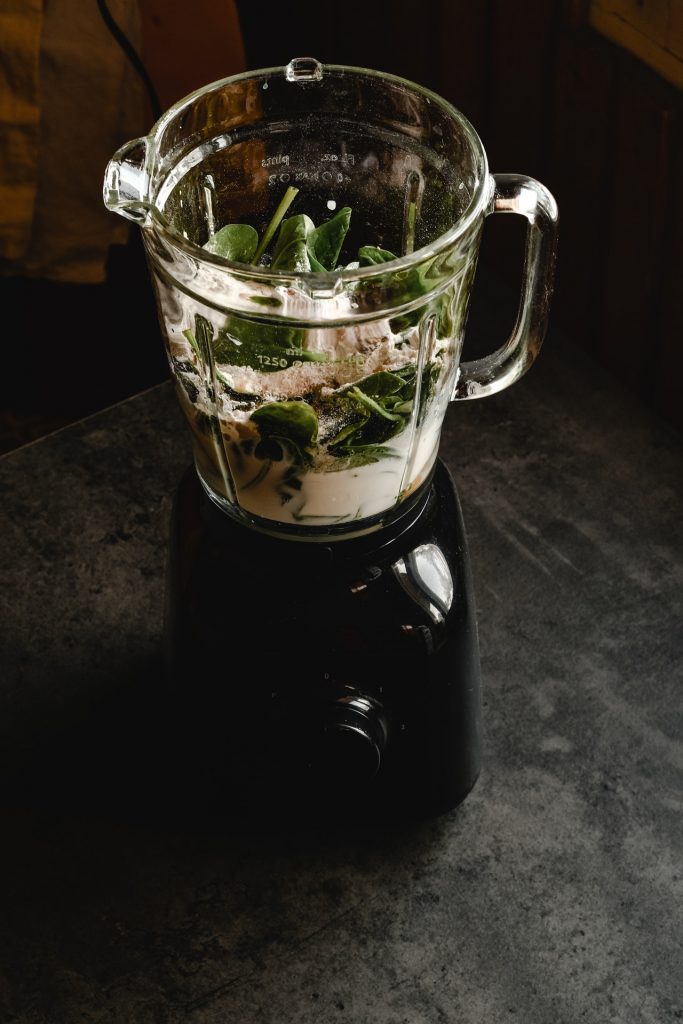
When to Use a Blender
Blenders tend to be best at blending liquids and soft ingredients into a fine mix.
Of the two appliances, blenders are much better at actually blending.
However, they can also be used to grind and crush dry ingredients.
Many come supplied with various attachments for these purposes.
Some people use the normal blades to do these jobs if their blender does not have any special attachments.
Blending
The combination of the shape of the bowl, the position of the blades, and the speed of the motor tend to make a blender the best thing for blending.
They are ideal for things like smoothies, soups, drinks, and sauces where liquid ingredients need to be mixed into as fine a mix as possible.
Grinding
While they aren’t always best at it, you can use blenders to grind dry ingredients like grain, nuts, and coffee.
They will be unlikely to achieve as fine a consistency as a food processor, which may take longer and can become clogged up.
Blenders with purpose-built attachments are best for this.
The purpose-built attachments are usually more hard-wearing and expel food away from the blade, rather than into it in order to reduce clogging.
In some cases, this can be done with the normal blades, although it may deaden them and can be difficult.
Crushing Ice
Crushing ice is a task that people often hope to carry out with either a blender or a food processor.
Most blenders do not crush ice well.
Ice is particularly tough and as with grinding, crushing ice can deaden your blender’s sharp blades.
Powerful blenders with specially made attachments are best for this task.
While crushing ice may be difficult, crushing frozen fruit for smoothies and milkshakes is usually possible with a blender.
When to Use a Food Processor
Food processors are one of the most versatile kitchen appliances and can be applied to a wide variety of tasks.
They tend to work well in most applications, but tend to not blend foods as well as a dedicated blender.
Food processors come supplied with a variety of blade attachments for different purposes.
Usually, you only need to choose the right prep attachment and the food processor will do all of the work.
Blending
In order to achieve a fine consistency, blending with a food processor often has to be done using the highest speed and the sharpest blade that the particular appliance has.
It will usually take longer to blend with a food processor than with a blender
The same as with a blender, you just add the ingredients and turn it on.
Because food processors do not create the same vortex as a blender, you usually have to stop the machine and manually stir the mix a few times while you are doing it.
While it is possible to blend with a food processor, it will usually take longer and require extra work to achieve the right results.
Chopping, Grating, Shredding, Slicing
The different attachments supplied with food processors can be used to carry out chopping, grating, shredding, and slicing of various ingredients, such as vegetables, cheese, or meat.
They will achieve much better and more consistent results than blenders and the extra space in the bowl and the size of the blade means they can accommodate larger quantities of ingredients.
Kneading
Kneading dough can be a laborious task that food processors are able to take care of automatically.
Most processor appliances come with a kneading attachment supplied, which will carry out kneading for you.
Mixing
When it comes to mixing ingredients, where the aim is to create an even mix rather than a fine or liquid consistency, food processors do very well.
Where a blender will tend to break the ingredients down further and mix them very finely together with a liquid consistency, food processors tend to just mix without changing the consistency too much.
Good recipes for mixing with a food processor are:
- Hummus
- Baby food
- Pesto sauce
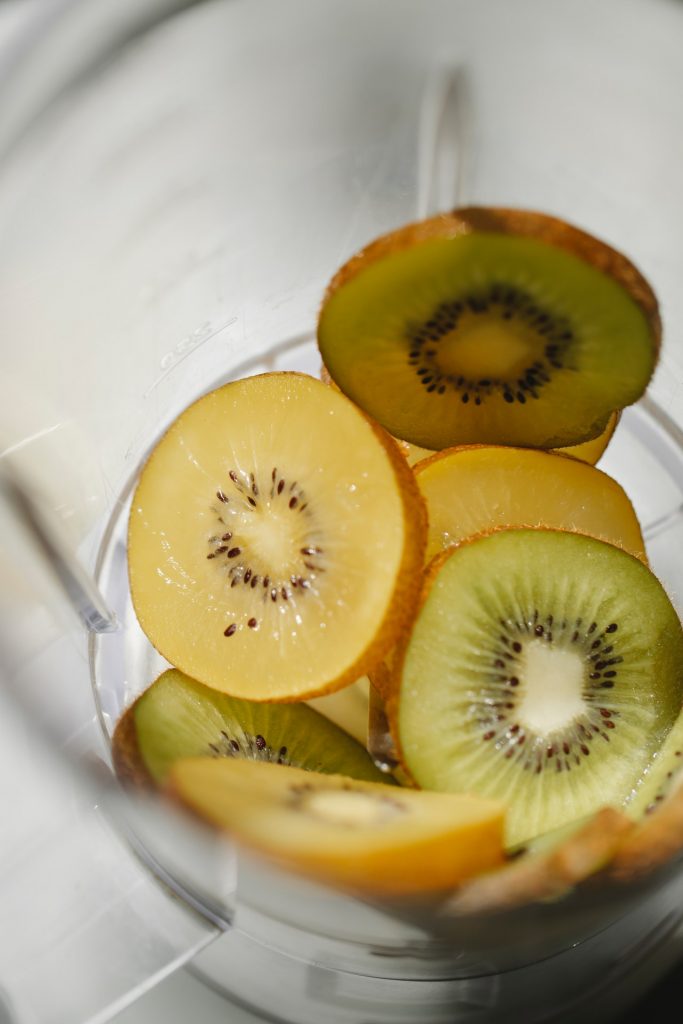
Crossover Between a Blender and a Food Processor
What people usually get confused about is where blenders and food processors overlap in their use.
Often this happens when they are applied to tasks that they are not specifically designed for.
This is often when a blender is used for things that they are not really designed for and in an ideal world would be done with a food processor.
Blenders are used by some enterprising people to shred and chop dry foods, mix food, and even knead the dough.
While it may be fun, these processes can place high stress on the motor, deaden the blades, and are less likely to be done effectively in a blender.
Often this happens when people don’t have the storage space in their kitchen to keep both a food processor and a blender
Vitamix vs Food Processor
Vitamix is a brand of blender.
They are well-regarded blenders and have a strong blade, an improved blade design, and a powerful motor.
On top of this, they also come with food processing attachments that make some food processing tasks possible.
As with all blenders, they operate differently from food processors and are less versatile.
However, the extra attachments make it possible to do some food processing jobs.
If you are deciding between a Vitamix and a food processor, then you should see if a Vitamix is able to carry out the food processing jobs that you require.
It is less likely to perform these tasks as well as a good food processor but may allow you to carry out the food processing tasks that you need and to benefit from its superior blending ability.
What is Better for Baby Food?
Food processors are generally better for baby food.
Most baby food should be made into a mix, rather than a liquid.
A food processor should create a better consistency than a blender and is the thing to go for when making baby food.
What is Better for Hummus?
As with baby food, a food processor is normally better for making hummus than a blender.
Most types of hummus should keep a fairly firm consistency with its constituent parts separated, rather than broken down and made into a liquid consistency.
What is Better for Vegetable Soup?
A blender is usually better for vegetable soup, where the intention is to create a fine, watery consistency.
However, if you are planning on making a chunky soup then I would suggest considering using a food processor to process the vegetable separately to the soup base.
Hopefully, this article has solved your food processor vs blender question and you now happily know the difference between a food processor and a blender.
Note, that as well as processors, blenders and immersion blenders there are other kitchen appliances that you might like to consider, such as:
- Mini-choppers
- Stand mixers
- Hand mixers
